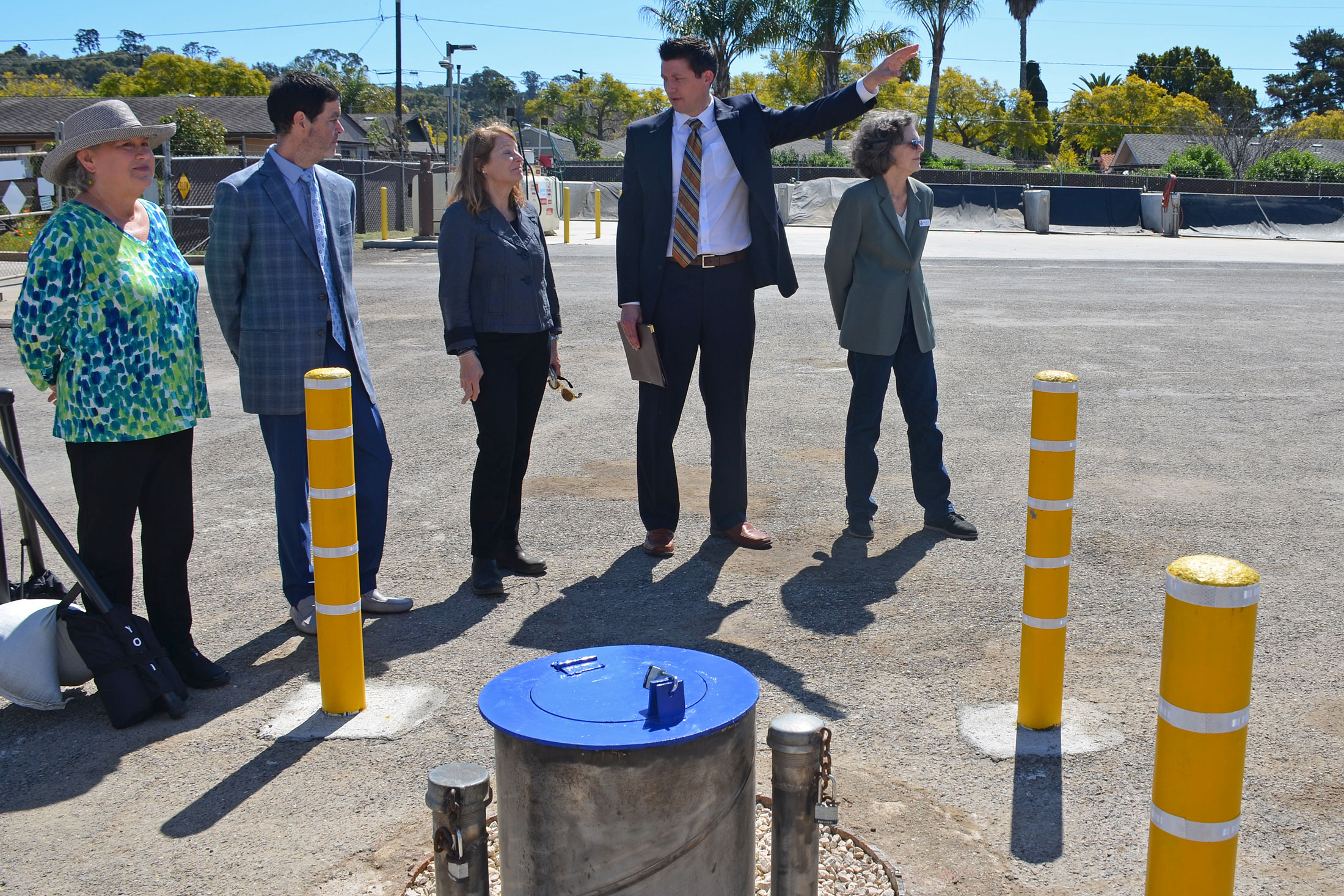Goleta Water District Working to Offset Energy Usage with Solar Systems, Other Projects | Local News – Noozhawk
The Goleta Water District is working to offset its annual energy usage by installing solar energy systems, using electric vehicles and installing a battery storage facility.
With those projects, the district will be able to produce 1.8 million kilowatt hours of clean energy annually, which is enough to offset the district’s annual electricity use and prepare the district for rising climate challenges.
“We need to be prepared,” said David Matson, general manager for the Goleta Water District. “Being resilient to the rising energy costs, being more resilient to climate change, it just makes sense.”
The district provides water for about 89,000 people in the Goleta Valley and 1,500 fire hydrants. It has had the goal to achieve net zero energy usage for more than a decade and is making significant strides this year to reach that goal.
Rising energy costs, the economic benefit of solar energy, and potential droughts and other climate challenges were big motivators for the district to achieve net zero energy use, according to Matson.
This year, the district is working to install 1,950 solar panels across three district properties, including carport and rooftop systems at the district headquarters, the Corona Del Mar Water Treatment Plant and the Ellwood Reservoir.
The solar panels will be able to support the 12 electrical vehicle chargers at the district headquarters and water treatment plant. Later this year, the district plans to install 20 more vehicle chargers as it adds to its electrical vehicle fleet, according to Matson.
The water district’s board president, Farfalla Borah, said moving to electric vehicles is more cost effective for the district.
“They don’t have a lot of moving parts and oil, they don’t need service, and they don’t break down as often,” Borah said. “The cost savings are pretty high even though the initial upfront cost is expensive. The ultimate costs aren’t as expensive.”
Matson said that with electric vehicles, the district will be able to offset its gasoline usage.
“With the weather that we have and with the short distances that we drive, it basically offsets all of the gasoline with that electric,” Matson said. “Once the solar is installed, we’ll be able to charge that fleet at no additional cost.”
The district will begin installing the solar arrays in the next few weeks and hopes to celebrate completing the project this fall, in time for the district’s 80th anniversary.
The district is also working on a battery storage project that will provide backup power to the water treatment plant and allow the district to store energy when costs are high and sell it back to the grid.
Borah said having the battery storage facility will allow the district to be able to treat water during power outages.
“I think all of that is a benefit to the community,” Borah said. “Not only as a cost-saving measure, but also for the impact that it has overall on our climate.”
Once the solar project and the battery storage project are up and running, the district’s entire energy use will be offset by clean energy.
“Producing that amount of clean energy will be a game-changer,” Matson said. “It will improve the resilience of the grid that the community uses because that’s 1.8 million kilowatts that the Goleta Water District isn’t going to be pulling off of the grid.”
Matson said the projects also will help during droughts, which can be energy intensive because of pumping water from underground and moving it across different elevations through pumps and motors.
Lauren Hanson, board vice president, said she hopes the district’s sustainability efforts inspire other districts to do the same as climate challenges rise.
“Maintaining a complex water system is a big job, and costs are always going up,” Hanson said. “All of the sustainability projects the district has done are to help to reduce the district’s carbon footprint and cut energy costs, which saves money for ratepayers. I think it would be wonderful if the district’s sustainability efforts inspire others to make some changes, too, since that very challenging climate future we’ve all heard about is here now.”
Borah said that as the district gets ready to celebrate 80 years, it’s important to her to be cost efficient as the district works to maintain its expensive infrastructure.
“People get very concerned when they turn on the tap and there’s no water coming out, and we don’t want to be in that situation,” Borah said. “Everything we’re doing is to create a safe system, and I really believe in that.”
This post was originally published on 3rd party site mentioned in the title of this site







